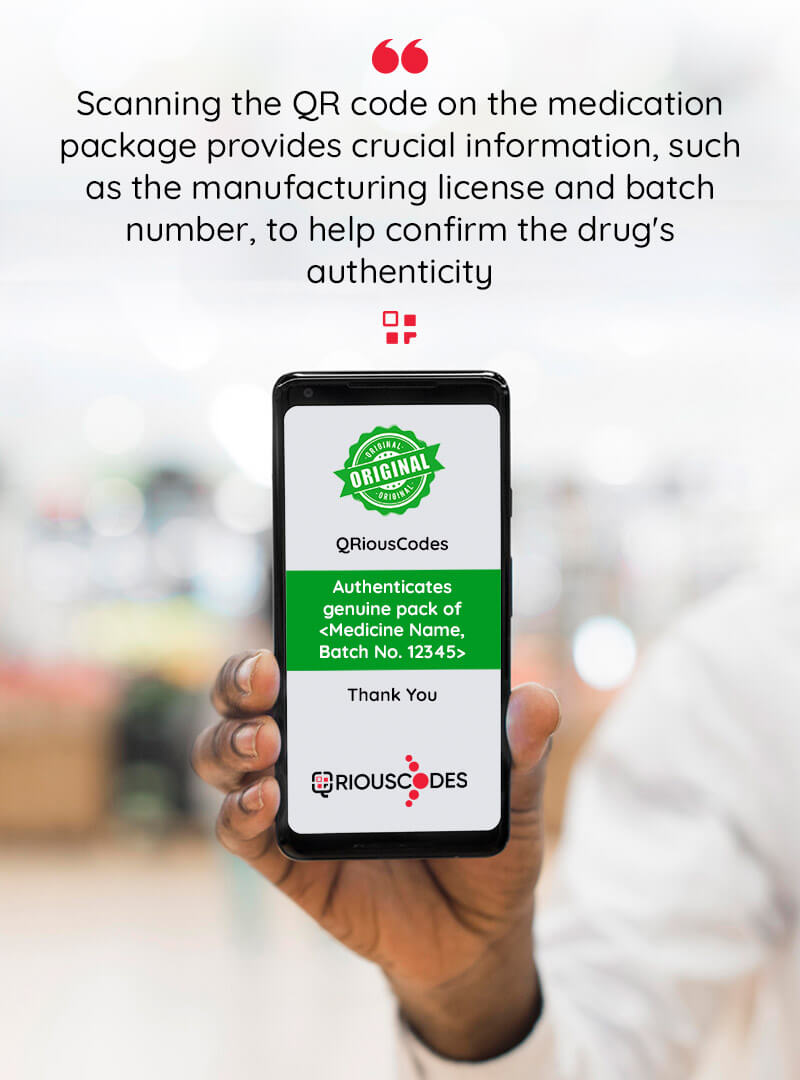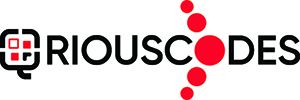
Unveiling the Dark Side of Drug Counterfeiting in India: A Deep Dive
This Case Study/ Blog explores the complex landscape of counterfeiting in the Pharmaceutical industry, its effects, and the ways in which QriousCodes is making a difference.
By definition, counterfeiting is an attempt made in imitation of something else with the intent to deceive.
In India, the drug counterfeiting industry is extremely lucrative. Because it is a low-cost manufacturing hub, counterfeiters now have easier access to India. Despite not having to pay the enormous expenditures of research and development that legitimate businesses do, counterfeiters are nonetheless able to make large profits.
Counterfeiting in the Pharmaceutical Industry
What is a counterfeit medicine?
Drugs that have been manufactured or packaged fraudulently are referred to as counterfeit/fake/spurious/falsified drugs because they either lack active ingredients or have the incorrect dosages.
The pharmaceutical sector in India is a highly knowledge-based sector that is expanding rapidly and contributing significantly to the country’s economy. India exports pharmaceuticals valued over 1 trillion rupees a year. The pharmaceutical sector is predicted to increase from $1.40 trillion at the end of 2027 to over $2.4 trillion by the end of 2029.
Role of the Pharmaceutical Companies
It is essential that manufacturing sites use anti-counterfeiting procedures. Strengthening supply-chain management and production quality through technology requires a greater focus. Pharmaceutical manufacturers require thinking about using block chain-based solutions to guarantee improved quality control at every stage of the value chain, including suppliers, distributors, bottling and packaging, and retail sales. Every medication should be serialized using a strict, permanent, traceable technique, according to pharmaceutical makers. Implementing strategies like mass serialisation with QR codes and track-and-trace technologies can assist prevent inferior or fake pharmaceuticals from making it past national and international borders and into store shelves.
Role of the Consumers and Pharmacists
Pharmacists as well as end consumers are vital players in the war against drug counterfeiting. They are the individuals who are in direct contact with the drug suppliers. It thus becomes essential to ensure that pharmacists and patients are aware of the problem of counterfeiting and the ways to identify genuine medicines from counterfeit medicines. A patient must buy the medicines from a trusted source and avoid using shady online pharmacies since reports suggest that most counterfeit products are sold via untrusted online pharmacies. The patient must immediately contact the pharmacist or the doctor if he/she notices any discrepancy in the appearance, taste, or effect of the consumed drug. Pharmacists must ensure that they are buying their medicines from a trustworthy source that has been approved by the respective drug regulatory agencies. Pharmacists are advised to keep records of products to ascertain the traceability of the medicine or medical device. This becomes necessary for patient safety. Another important task for the pharmacist is to notify the relevant authorities regarding any suspicious or confirmed case of drug counterfeiting.
Current Technology and Modern Technologies to Prevent Drug Counterfeiting
The pharmaceutical business faces a widespread issue with counterfeiting. Pharmaceutical counterfeiting has increased due to a number of factors, including the growing role of unregulated wholesalers and packagers in the drug supply chain, the growth of online pharmacies, technological advancements that facilitate the production of counterfeit drugs, and an increase in the importation of medications from other nations.
As counterfeiters’ tactics evolve, there is a dire need for more sophisticated anti-counterfeiting technology.
Overt, Covert and Track-and-Trace Technology
Currently, different technologies such as overt, covert, and track-and-trace technologies are being employed to tackle drug counterfeiting. Packaging can be verified using visual representations employing overt (visible) technology without the need for sophisticated equipment or specialised knowledge. In order to swiftly assess packaging, this technique uses optically uneven elements such as colour-shift inks or holograms on drug packaging. Colour-shift inks use various colour combinations in which certain colours may be seen at different angles. Holograms are also very effective tools against drug counterfeiting. They can be made further airtight by additional security features such a micro or nano texts, scrambled or hidden images, ultraviolet (UV)-sensitive or other specialized inks, etc., thus making them extremely difficult to copy. The track-and-trace system refers to the procedure of giving each stock unit a special identification number during manufacturing that stays with it throughout the supply chain until consumption. Further, a special pack coding connects and enables access to the exact information on a safe repository.
Apart from the above technologies, companies are also focusing on using covert technologies, including RFID labels on the packages as well as special UV inks that are unnoticeable to normal eyes but can be seen under UV rays. In fact, a combination of the various overt and covert techniques can be a valuable deterrent to prevent drug counterfeiting. The same has been undertaken by a few pharma giants such as Pfizer, GlaxoSmithKline and Johnson and Johnson for their top counterfeited and valuable brands.
Blockchain Technology
The complexity of the global pharmaceutical supply chain makes it vulnerable for drug counterfeiters to take advantage of. Blockchain technology uses a decentralised peer-to-peer architecture for transaction processing with little potential for record-tampering. This would make it possible to maintain a permanent record of all transactions that will be accessible to all the parties involved and include details such as location, data, quality, and pricing. Implementation of blockchain technology in the supply chain will help to make it safe, transparent and decentralised, thus enabling savings in expenditure while ensuring the ability to tracking down doubtful areas and close any gaps in the supply chain of genuine drug.
Blockchain has a vital role to play in several areas such as healthcare, logistics, public service, supply chain management, etc. Hence, such technology should be explored further from the viewpoint of fit for the purpose in the health care industry, as it could be useful in the management of medical records, clinical trials, medical supply management and control of access to health care data.
At QRiousCodes, we leverage this powerful technology to generate unique tokens which attach and store product and transaction data. These tokens can neither be regenerated nor modified making them gold-standard for serialization.

How does QriousCodes help?
To safeguard any brand from counterfeiting, companies must be able to recognize every product that passes their production line. Or, better yet, they require an intelligent system that handles it for them.
QriousCodes’ a comprehensive cloud-based Track and Trace solution provider focuses on empowering businesses of all sizes to attain the potential of QR codes and data analytics. Our solutions cater to an array of industries, enabling effective tracking and tracing of products, assets, and operational processes.
Enhanced Visibility: Manufacturers and regulators can track the transfer of goods from manufacturing to distribution through QriousCodes’ real-time supply chain visibility. Such transparency helps quickly detect any irregularities and unusual activities.
Product Authenticity: To ensure authenticity, every product unit is assigned a distinct identification, like a barcode, QR codes or a serial number. Verifying the authenticity of the products allows customers, experts, and industrialists to lower the chance of consuming or unintentionally administering counterfeit goods.
Instant Variability Detection: We make it possible to quickly identify any irregularities or unapproved detours in the supply chain. We make use of vision inspection systems, enabling prompt action to keep counterfeit goods off the market.
Regulation Compliance: We guarantee regulatory compliance by implementing QriousCodes systems. Companies can fulfill their legal duties by following defined procedures, such as serialization and unique product identification, which also create a safe environment that is difficult for counterfeiters to exploit.
Lastly, Counterfeit drugs are a menace to society, one that must be countered actively. There are different laws in different countries to discourage drug counterfeiting, but this requires regulatory oversight and sporadic testing of samples to assess the accuracy of the label claims. India has provisions under intellectual property law (The Trademark Act, 1999 and The Patents Act, 1970) and criminal laws (The Indian Penal Code, 1860 and Drugs and Cosmetics Act, 1940) to punish the drug counterfeiters.
These counterfeit products not only damage the integrity of genuine brands but also compromise the product quality, reliability, and safety.
But we are aware that “The best defense against deception is vigilance.”
And thus QriousCodes helps to tackle these issues efficiently through its comprehensive cloud-based solution which is thoughtfully designed to seamlessly integrate QR codes and cutting-edge data analytics, offering businesses a transformative toolkit for streamlined processes.
